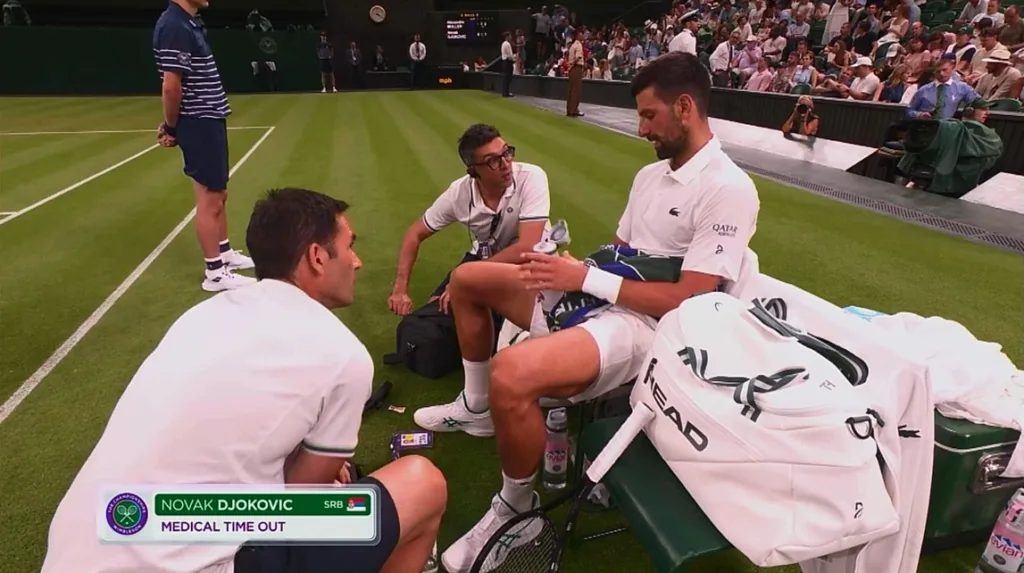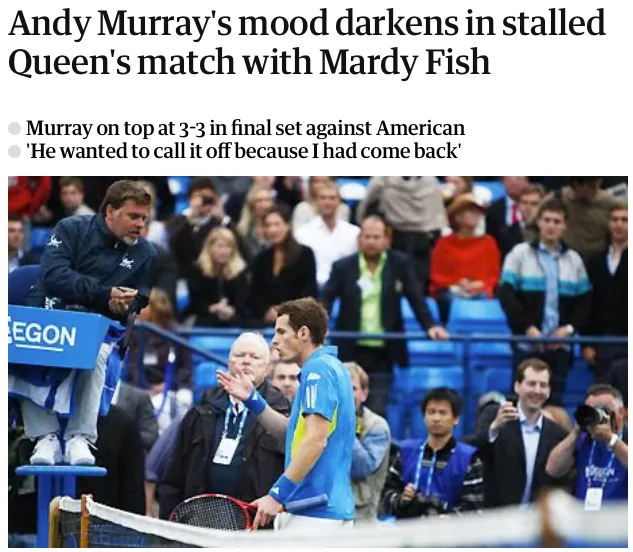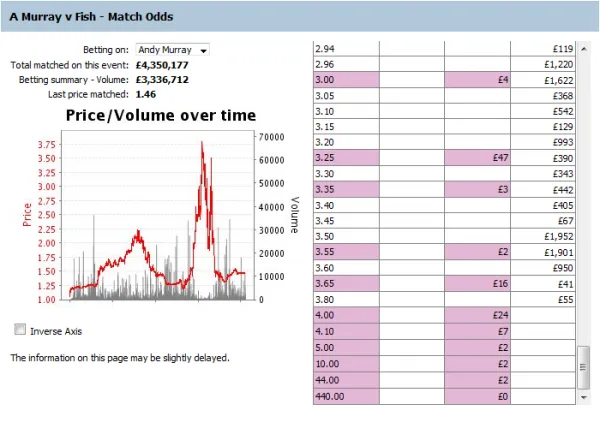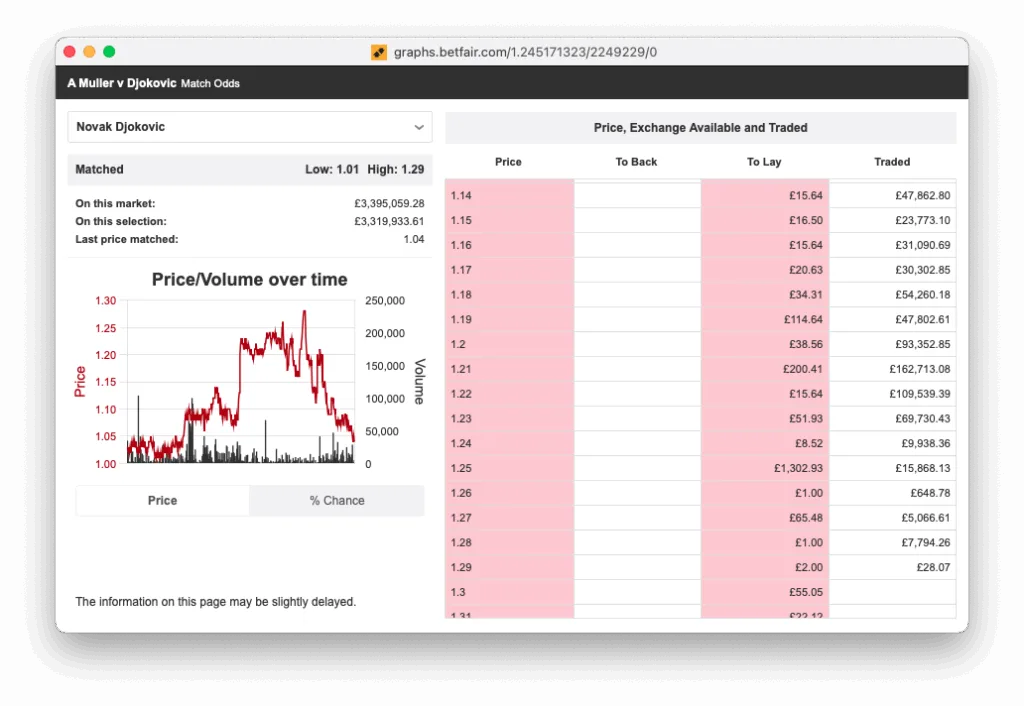
Breaks in play: Bad Light Stops Fish
Why momentum matters
Tennis is a sport of rhythms. A player on a roll can reel off games in a blur; drop the tempo and the same strokes misfire. That is why any interruption—however short—has value.
Whether it is a bathroom dash, a medical time-out or a complaint about fading light, the underlying aim is often the same: bleed an opponent’s momentum and buy time to regroup.
The Murray–Fish darkness debacle
A textbook example came at Queen’s in 2011. Mardy Fish eked out the first set 6-4, only to watch Andy Murray race through the second 6-1. Early in the decider Fish surged 3-0, but Murray clawed back to 3-3 and had the crowd and the current behind him.
At that very moment Fish approached the umpire and, citing “bad light”, persuaded officials to suspend play.

From Murray’s vantage point the ploy was blatant gamesmanship; from Fish’s, it was a legitimate use of the rules to “live to serve another day”. When play resumed the next afternoon Murray lost last set on a tie break and the episode still illustrates how a well-timed pause can flip the psychological script.

From toilet to towel: loopholes players exploit
Professional tennis offers a menu of sanctioned interruptions:
- Bathroom breaks. Until recently, men could take two off-court toilet visits with no strict limit on length. That loophole led to notorious delays—most memorably Stefanos Tsitsipas’s eight-minute disappearance against Murray at the 2021 US Open.
- Change-of-attire breaks. Often combined with a toilet trip, these stops let players cool down, adjust strapping or alter racquet tension away from prying cameras.
- Equipment time-outs. A broken string buys a player as long as it takes a ball-kid to fetch fresh frames from the locker room.
- Medical time-outs (MTOs). Three minutes of treatment plus two for evaluation, ostensibly for sudden injury. In practice they can function as a tactical pit-stop.
Medical time-outs: the perennial grey area
Because only the on-court physio can judge legitimacy, MTOs remain ripe for abuse. This January Emma Raducanu was booed in Melbourne after requesting treatment while trailing Amanda Anisimova; social media dubbed it a “momentum break”, not a medical one. Six months earlier Iga Świątek faced similar backlash in the United Cup when she stopped play while 1-2 down in the final set against Katie Boulter.
It’s easy to see that some players deliberately take a medical time-out to gather their composure or put off their opponent.
Some players are ‘experts’ at doing this and we saw this again in the First round of Wimbledon 2025. Novak Djokovic, often appears injured or ill, and perhaps was on this occasion.
But he frequently comes back to life after a time-out to close things out.

Rule tightening – does it work?
Governing bodies have tried to close the loopholes. The 2024 ATP Rulebook now restricts players to one three-minute toilet break per match, with an extra two minutes only if they need to change kit.
Tournaments also experiment with visible countdown clocks and fines for dawdling. Yet tactical pauses “still turn the tide” in tight matches—proof that players quickly adapt to tighter wording.
Psychology versus sportsmanship
So where is the line between savvy professionalism and unsporting conduct? Coaches quietly accept that pauses can:
- Reset the mind. A breather helps a rattled player calm nerves, rethink patterns and slow an opponent’s adrenaline spike.
- Physically recover. Stiffness, cramps or a spike in heart-rate can be managed with a brief spell off court—especially in best-of-five contests or extreme heat.
- Disrupt the crowd. Home supporters in full voice can be hushed when the action stops, diluting a rival’s energy source.
But the same tactics infuriate purists who argue tennis should be an unbroken duel of skill, stamina and nerve. The word “sportsmanship” still appears in the code of conduct, yet interpretation is slippery.
Will the sport ever stamp it out?
Realistically, no. So long as physical well-being is a legitimate concern, officials cannot ban pauses outright—and crafty competitors will always push boundaries. What can change is transparency: clear clocks, consistent enforcement and public explanation when play halts. Shining a light on the dark arts makes it harder to hide.
In the meantime, expect veterans and rising stars alike to keep exploiting every second the rulebook affords. Momentum will swing, tempers will flare and headlines will scream “controversy” long after the lights dim—just as they did when Mardy Fish stepped into the London twilight and left Andy Murray fuming in the gloom.
